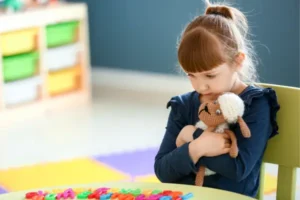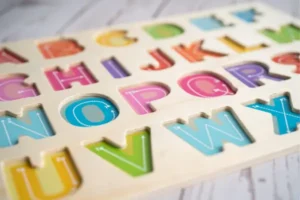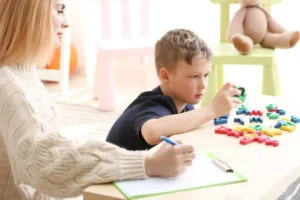Autism spectrum disorder (ASD) affects how a child communicates, interacts, and processes information. One of the key challenges for children with autism is developing language skills, which are crucial for effective communication and social engagement. For these children, strengthening language abilities can significantly impact their social, academic, and emotional development.
This article aims to highlight some of the top educational toys that can help boost language skills in children with autism. These toys not only offer fun and interactive play experiences but also support language acquisition and communication skills in a way that is engaging and therapeutic.
Improving language development in children with autism is not just about learning words—it’s about enhancing their ability to connect with others, express themselves, and navigate the world more confidently.
Understanding Autism and Language Development
What is Autism?
Autism spectrum disorder (ASD) is a developmental condition that affects how a child perceives and interacts with the world. Children with autism may have challenges with social communication, repetitive behaviors, and limited interests, which can vary in severity. Understanding these differences is key to supporting their development in a positive way.
Language Challenges in Children with Autism
Many children with autism face difficulties in communication. These challenges can include delayed speech, a limited vocabulary, trouble forming sentences, and difficulty understanding or using social language. For example, a child might struggle with eye contact, interpreting tone of voice, or engaging in back-and-forth conversations. These challenges can make it harder for children to connect with others and express their needs.
How Educational Toys Can Help
Educational toys play a vital role in supporting language development by providing interactive and engaging ways for children with autism to practice communication. Toys that incorporate sensory stimulation, repetition, and social interaction can help improve vocabulary, comprehension, and even non-verbal communication skills. By encouraging play that involves imitation, turn-taking, and conversation, these toys can be a fun and effective tool for boosting language skills in children with autism.
Key Features of Educational Toys for Children with Autism
Sensory Toys
Sensory toys are designed to engage multiple senses, such as sight, touch, sound, and movement. These toys help children with autism process sensory input more effectively, creating a calming and stimulating environment that can support language development. For example, toys with textures, lights, or sounds can help children focus and enhance their ability to respond to verbal cues, improving both comprehension and verbal expression.
Interactive Toys
Toys that encourage active participation, like talking dolls or interactive books, are highly beneficial for children with autism. These toys prompt children to engage in conversation, respond to questions, and interact with their environment. By encouraging back-and-forth communication, interactive toys help children practice new vocabulary and improve social language skills in a playful, supportive way.
Imaginative Play Toys
Pretend play toys, such as action figures, playsets, and dolls, are excellent tools for fostering creativity and language growth. When children engage in imaginative play, they use new words, form sentences, and practice social interactions in a low-pressure setting. This type of play also enhances storytelling abilities and can encourage children to communicate with others in more complex ways.
Structured and Sequence-based Toys
Toys with clear steps or routines, like puzzles, matching games, and sequencing activities, provide structure and predictability, which can help children with autism improve cognitive and linguistic skills. These toys encourage children to follow instructions, expand their vocabulary, and understand the relationship between actions and outcomes, reinforcing language concepts in an organized, engaging way.
Top Educational Toys to Boost Language Skills in Children with Autism
1. LeapFrog LeapStart Interactive Learning System
Description: The LeapStart system is an interactive learning toy that engages children with age-appropriate lessons across multiple subjects, including language development. Using a stylus, children can touch the pages of books to hear stories, songs, and words, helping them build vocabulary and comprehension skills.
Key Features: Interactive sound, touch-sensitive technology, and educational books.
Age Range: 2-7 years.
2. VTech Touch and Learn Activity Desk
Description: This interactive desk allows children to explore language, numbers, music, and more. The desk features a variety of learning activities, from letter recognition to word-building exercises. It encourages children to practice pronunciation, vocabulary, and basic sentence structure.
Key Features: Talking buttons, alphabet recognition, and word association activities.
Benefits: Enhances social communication, listening, and word-building skills.
Age Range: 2-5 years.
3. Fisher-Price Laugh & Learn Smart Stages Puppy
Description: This cuddly toy responds to touch with songs, phrases, and sound effects, helping children learn words, letters, and phrases. The Smart Stages feature adjusts content to suit the child’s developmental stage, making it adaptable as language skills grow.
Key Features: Visual and auditory stimulation, interactive voice prompts, and age-appropriate learning stages.
Benefits: Encourages both verbal and non-verbal communication through responsive play.
Age Range: 6 months – 3 years.
4. Melissa & Doug See & Spell
Description: This classic spelling toy helps children develop early reading and language skills by having them match letters with corresponding pictures. The repetitive nature of the game promotes word recognition and phonetic awareness, key components in language development.
Key Features: Letter recognition, visual aids, and a simple, structured format.
Benefits: Supports repetition and sequence learning, enhancing word recognition and language skills.
Age Range: 4-6 years.
5. Co-operative Board Games (e.g., “The Sneaky, Snacky Squirrel Game”)
Description: Co-operative games like “The Sneaky, Snacky Squirrel” encourage children to work together while practicing language skills, such as following instructions, naming objects, and using conversational phrases. These games promote social language through collaborative play and shared goals.
Key Features: Simple rules, visual cues, and turn-taking elements.
Benefits: Fosters social interaction and communication in a group setting.
Age Range: 3-6 years.
These educational toys provide a mix of sensory, interactive, and imaginative play opportunities that can help children with autism build essential language and communication skills in an enjoyable, engaging way.
Tips for Choosing the Right Educational Toy for a Child with Autism
Consider Sensory Preferences
When selecting toys, consider the child’s sensory preferences—whether they respond better to tactile, auditory, or visual stimulation. Sensory-rich toys, like those with varied textures, lights, or sounds, can engage the child more effectively and support language development in a way that feels comfortable to them.
Assess the Child’s Developmental Stage
Choose toys that are appropriate for the child’s current language level. If a child is just beginning to speak, look for toys that encourage simple word recognition or sounds. For children with more advanced language skills, opt for toys that promote sentence building and conversation.
Incorporate Play with Caregivers
Adult involvement is key to maximizing the effectiveness of educational toys. Caregivers can guide the child through play, reinforce new words, and model social interactions, making the learning experience more meaningful and supportive.
Look for Flexibility
Select toys that can grow with the child. Toys that offer multiple levels of engagement or can be adapted as the child’s skills develop will provide long-term value. For example, some toys allow for more advanced play as the child progresses, ensuring continuous language development over time.
Conclusion
Language development is crucial for children with autism, as it helps them communicate effectively, engage socially, and build connections with others. Educational toys can play a significant role in enhancing these skills by offering interactive, engaging, and developmentally appropriate experiences.
We encourage parents and caregivers to explore a variety of educational toys that are not only fun but also promote language learning in meaningful ways. The right toy can make a lasting impact on a child’s ability to communicate and thrive.
We’d love to hear from you! Share your experiences with educational toys or let us know if you have any recommendations that have helped improve language skills in children with autism.




